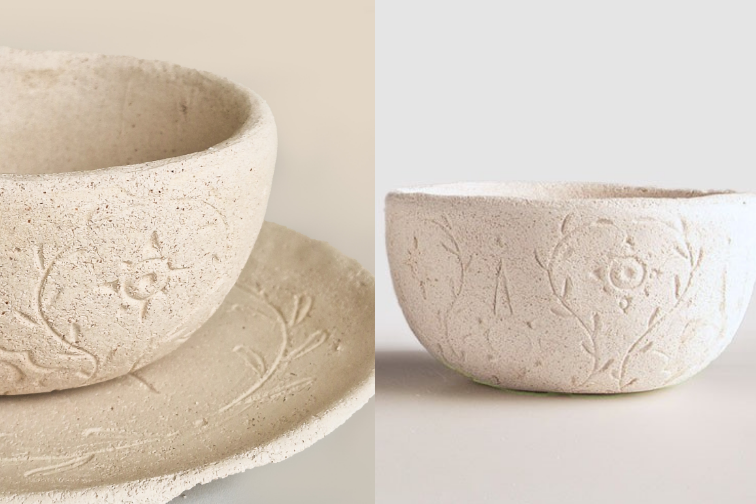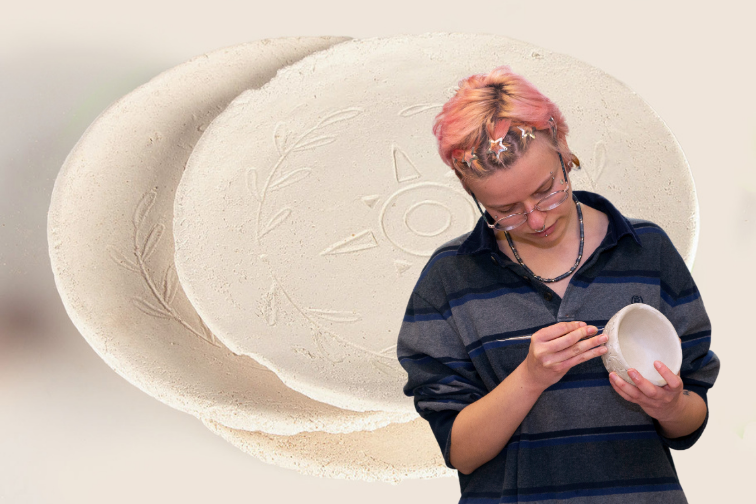Sustainability Series - Ceramegg: turning eggshells into sustainable tableware
Published 19th August 2025
Created by Oliwia Ostaszewska, BA Product Design Student at the University of Lincoln, Ceramegg began as a personal observation of household egg consumption. What started at home quickly developed into a deeper investigation into the environmental impact of eggshell waste on an industrial scale. This realisation became the starting point for Ceramegg, a project that transforms calcium-rich waste into biodegradable material that is both functional and beautiful.
Understanding the problem: eggshell waste
Eggshells may seem small, but the scale of waste from the food industry is significant. Globally, 8.58 million metric tons of eggshells are discarded each year. Around 75% of this waste ends up in landfills without treatment, roughly 6.4 million tons of potentially useful material lost.
Improper disposal does not just fill landfills, it creates a breeding ground for harmful bacteria, which can affect soil and water quality. Ceramegg offers an inspiring alternative by showing how eggshells can be reused in ways that are practical, creative, and environmentally responsible.
Ceramegg tableware: the solution
Ceramegg is made from:
- Finely ground eggshells sourced from local households
- Sodium alginate, a natural binder from brown algae
- Glycerine, which keeps the material flexible yet strong
Each eggshell goes through a two-step sterilisation, boiling and heating, before being ground to a fine powder. Combined with sodium alginate and glycerine, this creates a durable, tactile material that retains the beauty of traditional ceramics while remaining fully biodegradable.

How Ceramegg is made
Developing Ceramegg involved careful experimentation:
- Particle size matters. Finer eggshell powder makes a stronger, less brittle material
- Moisture control. The right water content prevents shrinking and distortion
- Moulding process. Plaster of Paris moulds give a smooth, tactile finish
- Hand-crafted inspiration. Moulds replicate the delicate forms of traditional ceramics
The result is tableware that is both functional and beautiful, demonstrating to students and teachers how careful design choices influence performance and sustainability.
Design inspiration
The decorative surface draws from Polish pisanki, traditional Easter egg designs. Each sun motif symbolises new beginnings and the cycle of life, reflecting the project’s commitment to giving waste a new purpose before returning it to the earth. Ceramegg embodies the circularity of nature, connecting creativity with environmental responsibility.
Composting and environmental benefits
Ceramegg tableware is fully compostable. Once crushed, it decomposes in around 90 days, returning nutrients to the soil. Key benefits include:
- Boosted soil calcium content
- Regulation of acidic soil pH
- Improved water retention thanks to sodium alginate
About the creator
Oliwia has since gone on to further her research at MA level, with a focus on social sustainability and creative solutions for challenging societal conversations.

Resources for teachers
Ceramegg offers practical ways to bring sustainability, circular design, and creative thinking into the classroom. Teachers can explore:
- Sustainable material use
- Prototyping and testing techniques
- Cultural design inspiration
- Composting and environmental responsibility
Download the full article
Ceramegg has been highlighted in a feature article that you can download as a PDF below. Keep it handy for future inspiration or use it as a classroom resource to support your teaching.



